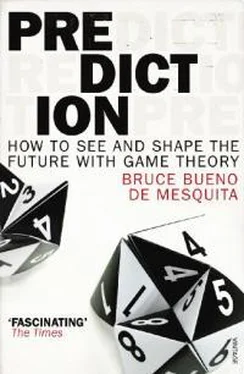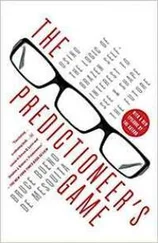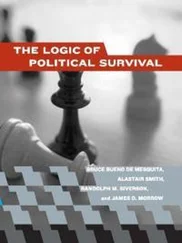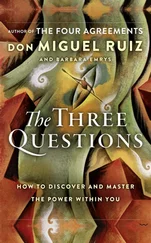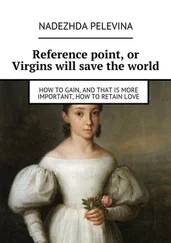In this chapter we will look ahead a year or two from when I am writing this (in April 2009 for the case of Iran-Iraq relations and June 2008 for the Pakistan case). Here is where the rubber really meets the road. We will look at what the United States government could do to diminish the threat of terrorism or insurgency in Pakistan, and the likely relations to develop between Iran and Iraq if President Obama fully withdraws U.S. forces from Iraq or leaves fifty thousand in that country well beyond August 2010.

Back in the spring of 2008 and again in 2009 I taught an undergraduate seminar at NYU in which twenty terrific students in each class used my new forecasting model. This was a great opportunity for me (as well as, I hope, for my students) to find out how hard or easy it is to teach people with no prior experience how to become effective political engineers. Fortunately, my students were willing guinea pigs, and they did a great job.
The main idea behind this course, sponsored by NYU’s Alexander Hamilton Center for Political Economy, was to search for solutions to pressing policy problems based only on logic and evidence. That is the Center’s mission. It leaves no room for partisanship, ideology, opinion, anecdotes, or personal wishes when it comes to crafting solutions. Game-theory models, however, are a way to fulfill the mission. With that in mind, I asked my students to pick any foreign policy problem that intrigued them. They clustered themselves into groups and set to work on Pakistan, the Israeli-Palestinian dispute, global warming, nuclear proliferation, relations between Cuba and the United States, relations between Russia and the Ukraine, and many other critical policy concerns.
Each student studied a problem that he or she really cared about. They took the class knowing that they would use game theory to work out likely future developments and to write a script about how to improve the future from the perspective of any one of the players in the game. They had almost no prior experience with any of the material or models. They had limited access to experts, so they relied on the Internet and major news outlets to put their data together. I mention this to be clear that any hardworking, motivated person can replicate what they did. All this being said, my students used my new model, and I certainly reviewed their work—so any misses are the model’s and mine.
Okay, let’s see what they came up with, remembering that the first class began in January 2008 and had its last meeting on May 5, 2008, and that the second started in late January 2009 and ended in the first week of May 2009. Everything reported here was worked out during those months. No information has been updated or altered to take account of later developments. The students had no prior experience with my old forecasting model or my entirely different and more sophisticated new model. We met for two and a half hours each week in class. They made weekly presentations, got lots of feedback, and spent a fair amount of additional time with me in my office learning how to interpret the new model’s results. They also put in lots of additional time figuring out what questions to ask and how to frame them, assembling the data, and preparing their weekly presentations and final papers. Let’s have a look at what they found out.
PAKISTAN: WHERE HAVE ALL THE SOLDIERS GONE?
The group that decided to work on Pakistan in 2008 was intrigued by three policy questions. They wanted to know how willing the Pakistani government was going to be to pursue militant groups operating in and around Pakistan, including al-Qaeda, the Pakistani Taliban, and the Afghan Taliban. They also wanted to investigate whether the Pakistani government would allow U.S. military forces to use Pakistani territory to launch efforts to track down militants. Finally, they wanted to forecast the level of future U.S. foreign aid to Pakistan and whether a higher or lower amount of aid was likely to change the Pakistani leadership’s approach to pursuing militants.
These are big questions that go to the heart of U.S. interests in Pakistan. While answering these questions, the students also uncovered answers to a bunch of other important and compelling issues.
By way of background, it is important to remember that when the students started their project, Pakistan was in the midst of a crisis. Benazir Bhutto, Pakistan’s former prime minister, had returned from exile in late 2007 as part of a deal she negotiated with Pakistani president Pervez Musharraf. She was expected to become the next prime minister following the general elections scheduled for January 8, 2008. Instead, she was assassinated on December 27, 2007.
The elections were postponed to February 18, 2008. Musharraf’s party was routed, while the parties of former prime ministers Bhutto and Nawaz Sharif, also recently returned from exile, won control of the national assembly (Pakistan’s parliament). Musharraf continued as president. Mrs. Bhutto’s husband, Asif Ali Zardari, became the new head of her party, the Pakistan Peoples Party (PPP), while the party of former prime minister Nawaz Sharif, the Pakistan Muslim League–Nawaz (PML-N), joined the PPP to form a coalition government.
Neither of the two victorious parties was a friend to Musharraf. He was in the awkward position of having to certify the new government, expecting that it was likely to impeach him as soon as it was certified. He had earlier fired the chief justice of Pakistan’s supreme court to prevent him from ruling on the legitimacy of Musharraf’s own reelection. The new government was expected to restore the chief justice and had declared its intention to depose Musharraf as soon as the PPP and PML-N came to power. It did not do so. Failing to get PPP support on this important issue, Sharif and the PML-N withdrew from the coalition on August 25, 2008. With pressure mounting from the United States to do something about the use of Pakistani territory as a base of operations for al-Qaeda and the Taliban, and with the Pakistani government itself deeply divided on how to move forward, the country was in turmoil and its future direction was extremely uncertain.
The situation seemed dire not only for Musharraf, but from the American perspective as well. For all of his limitations, Musharraf was an important ally in the war on terror. He had literally put his life on the line by siding with the United States against the Taliban government in Afghanistan after 9/11. By 2007, however, his support seemed to waver. He turned greater authority over the pursuit of militants to local tribal officials along the Afghan-Pakistani border, reducing the role of the Pakistani army. From the American perspective, this hurt the prospects for continued success against the terrorists. Musharraf argued that it would prove beneficial because the locals knew the situation on the ground infinitely better than any outsiders and they had the local clout to get things done. (My own view was that this was a move by Musharraf to extract more economic and military aid from the United States by threatening to allow the situation to deteriorate if the aid was not forthcoming. It’s important to note that my students knew nothing about my personal view.) Although very much his own man and hardly perfect in American eyes, Musharraf was nevertheless the United States’ best source of help in the effort to defeat al-Qaeda and the Taliban. The new government in parliament, in contrast, spoke openly of finding a way to negotiate with the groups identified by the United States government as terrorists.
So what did my students find out? Their analysis showed that the PPP would have even greater policy influence relative to Sharif’s PML-N than the PPP’s advantage in National Assembly seats implied. This was not particularly surprising, but then, if a model only produces the unexpected, we should be suspicious of it. Why wasn’t it surprising? To start with, Sharif did not personally compete in the February election. That left his party without strong leadership in the National Assembly. When he finally decided to run in a by-election, the courts ruled that he was not eligible because of his earlier conviction on corruption charges when he was prime minister. It was, in fact, his earlier corruption case that had sent him into exile in the first place. That aspect of my students’ analysis merely confirmed what any Pakistan watcher already knew. Sharif was not as popular as Bhutto, and neither was his political party as popular as hers. With her assassination the PPP gained even greater influence, riding the crest of an upsurge in sympathy for her, her political movement, and her vision for the future.
Читать дальше
